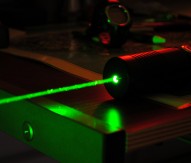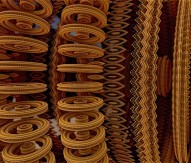
Researchers develop new nanodiamond tool
With natural diamonds always containing defects, the most researched defects are nitrogen-vacancy centres comprising a nitrogen atom and a vacancy. The diamonds may serve as highly sensitive sensors or as register components for quantum computers. However, until now it has not been possible to extract the optically stored information electronically.
A team headed by physicist Professor Alexander Holleitner at the TU München in Germany, and Frank Koppens, physics professor at the Institut de Ciencies Fotoniques near Barcelona, Spain, have devised a methodology for reading stored information. The research was part-funded by the European Research Council.
When laser light shines on a nanodiamond, a light photon raises an electron from its ground state to an excited state in the nitrogen-vacancy centre. “The system of the excited electron and the vacated ground state can be viewed as a dipole,” says Holleitner. “This dipole, in turn, induces another dipole comprising an electron and a vacancy in the neighbouring graphene layer.”
In contrast to the approximately 100 nanometre large diamonds, in which individual nitrogen-vacancy centres are insulated from each other, the graphene layer is electrically conducting. Two gold electrodes detect the induced charge, making it electronically measureable.
“In principle our technology should also work with dye molecules,” says doctoral candidate Andreas Brenneis, who carried out the measurements. “A diamond has some 500 point defects, but the methodology is so sensitive that we should be able to even measure individual dye molecules.”
As a result of the extremely fast switching speeds of the nanocircuits developed by the researchers, sensors built using this technology could be used not only to measure extremely fast processes. Integrated into future quantum computers they would allow clock speeds ranging into the terahertz domain.
The research is published in the journal Nature Nanotechnology.




